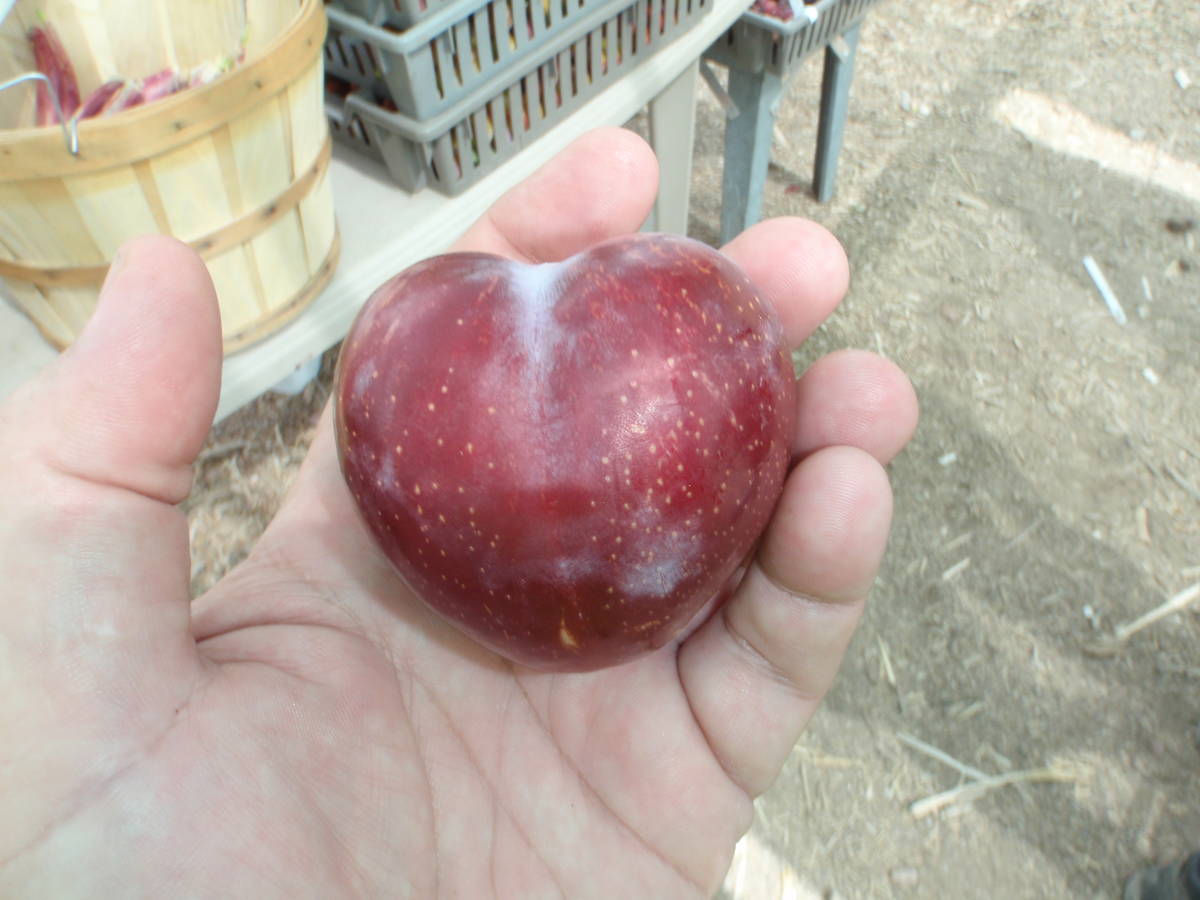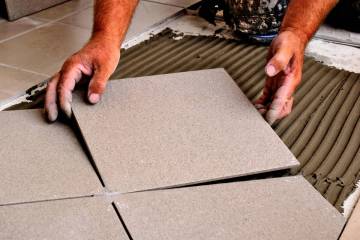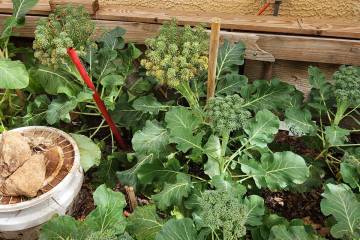African sumacs sometimes grow shoots from epicormic buds
Q: Our African sumac is about 30 years old and growing lumps on the tree’s trunk. We never noticed these lumps until today. Undoubtedly, they have been there. We love our tree and don’t want to lose it. Please advise if you think there is a problem.
A: These lumps or bumps on the trunk are probably epicormic nodules. They are places on the trunk covered by thin bark that have a cluster of buds under it. These buds will sometimes grow into shoots. You will see the same swellings on European olive trees, which will also grow shoots from epicormic buds.
On some trees removing these shoots as soon as they are seen may cause these nodules to stop producing shoots or fewer of them. Some plants that sucker more than others may produce more of these nodules than others. These buds are under the control of the top growth so heavy pruning of the top can cause more of these shoots to grow.
Q: A Sweet Treat Pluerry can be pollinated by a Flavor King pluot, but is the reverse true?
A: Yes. If a tree is a pollinizer for another type of tree, then they both benefit from the transfer of pollen between trees, called cross-pollination, and consequential fruit set. Many fruit trees will set fruit without a pollinizer tree, but using a pollinizer tree guarantees bigger harvests.
Years ago, many different varieties of fruit trees were pollinizers for other varieties if the flowers on both trees opened at the same time. Plant breeding has changed that.
Plant breeders focused on getting rid of the need for pollinizer trees, improved fruit quality, and early production. We saw this happen in apples like Gala, Pink Lady and almonds like All in One. The fruit quality is excellent compared with the farmer-favored Red Delicious apples that every orchard had during the 1940s through 1970s.
Q: I am purchasing muscadine grapes to grow in the Las Vegas Valley. Firstly, do you recommend muscadines? Secondly, which muscadine variety do you recommend out of Black Cowart, Black Nesbitt, Black Noble, Black Southland and Southern Dixie?
A: I have never grown a black muscadine type of grape. I would guess they would do well here.
In the heat of the desert, we are encouraged to grow the so-called heat-tolerant grapes. Examples of wine grapes that fit this category are barbera, zinfandel, muscat and others. We are told to avoid the so-called cool-season grapes like the pinots. I had luck growing pinot noir grape here, which is known to be a cool-season grape.
Golden Muscat or Muscat of Alexandria does very well here as a wine, jelly or juice grape. The word “muscat” or “muscadine” refers to the foxy flavor attributed to these grapes and may have little to do with their genetics.
The grapes you mentioned, on the other hand, are southern, Native American grapes of a certain species and so they will be closely related. If one of these varieties does well, most likely they all will. Pick a variety you like.
The single trait I found important for good quality fruit production here is fall fruit production, i.e., after the middle of September. High nighttime summer temperatures may contribute to a negative effect on fruit quality.
I had the best luck with grapes when the soil is covered with a couple of inches of litter such as woodchips and left to decompose. I have had some problems with some vines getting sunburned unless the Mojave Desert soil is covered with a thick layer of this litter.
Q: My garden always produced successfully. During the past two summer seasons, I was unable to successfully germinate any of the lettuce or spinach seeds in October nor the bean seeds I sowed last May. They were all recently purchased. I was wondering if the culprit could be the peppermint I allowed to grow all through the garden.
A: You hinted about the problem of using old seed for germination and it sounds like you avoided that. But let’s get that out of the way first.
Most larger seeds don’t store well because of the oils and starch contained in the seed. This includes corn, beans, peas, etc. Decent storage of seed is any time the combination of temperature and humidity is less than 100 degrees. So, if it’s low humidity, seed can be stored with higher temperatures. If there is high humidity, the seed must be stored at lower temperatures.
Small seed like lettuce typically stores longer than big seed that contains oil and starch. But even corn, beans and pea seed keep reasonably well for a couple of years if storage temperatures are kept under control.
There are two primary reasons for the failure of seed germination if everything else is done correctly: competition for nutrients and space by neighboring plants and allelopathy. Many plants, even after they are dead, put organic chemicals in the soil as they rot that slow or prevent other seeds from germinating.
A textbook example of this type of allelopathy is black walnut. Closer to home are other examples like salt cedar and creosote bush. I observed probable allelopathy by French lavender growing near grapevines. Allelopathy is a very common occurrence among plants, and it can be difficult to separate simple plant competition from allelopathy.
It’s possible there is allelopathy going on with your beans and lettuce because of the growth and old residues from mint. Since mint can be very aggressive, poor seed germination can also be because of plant competition. It might be from both.
Start your lettuce and beans as seedlings for that area and avoid seed germination. If you have mint of any kind in that area, grow it separately in containers to keep it from spreading in the garden because it is so aggressive. By eliminating the mint in that area, you would avoid both competition and possible allelopathy.
Bob Morris is a horticulture expert and professor emeritus of the University of Nevada, Las Vegas. Visit his blog at xtremehorticulture.blogspot.com. Send questions to Extremehort@aol.com.























